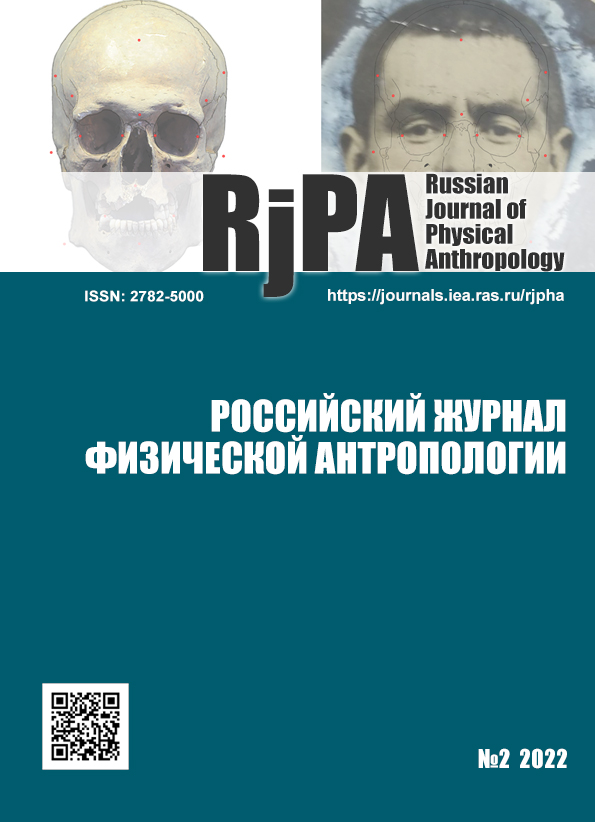THE COMPLEX CHARACTERISTIC OF THE ANTHROPOLOGICAL MATERIALS FROM THE ALOVSKAYA KURGAN GROUPS(BRONZE AGE)
Keywords:
Alovskie burial mound groups, Bronze Age, Srubnaya archaeological culture, Western Volga region, pathological transfiguration, indicators of mechanical stress, physical activity, osteoarthrosisAbstract
In 1981 V. N. Shitov undertook the excavations of three kurgan groups near to the
village of Alovo, Atyashevskij district, Mordovian ASSR. Kurgan No.1 was excavated
in each kurgan group. All the kurgans studied had a round shape. Traces
of one burial were found under the kurgans of the first kurgan group. Traces of
two burials were found under the kurgans of the second and third kurgan groups.
The burial rite and the inventories that accompanied the deceased testify that all
the burials belonged to the Srubnaya archaeological culture of the Late Bronze
Age. The general dating of all the monuments is II-I millennium AD. In the article
we give a comprehensive and versatile characterization of the anthropological
materials from the Alov kurgan groups. The material is scarce. The degree
of its preservation is different. Incomplete skeletons of at least three individuals
were found and examined according to craniometric, odontological, osteometric
and paleopathological programs. The craniological materials are represented by
a single skull from an unidentified burial. The skull is massive. It belonged to a
man with Caucasian traits, but with a slight Mongoloid raid. The percentage of
the Mongoloid element (according to G. F. Debets) is 21.7%. The odontological
features characteristic of the western odontological trunk predominate. The studies
of the postcranial skeleton showed that all the individuals from the Alov kurgan
groups experienced significant physical exertion during their lifetime. The
body length of two individuals was determined. They both were relatively tall,
even by today’s standards.

Downloads
Published
Versions
- 30.08.2022 (2)
- 30.08.2022 (1)



